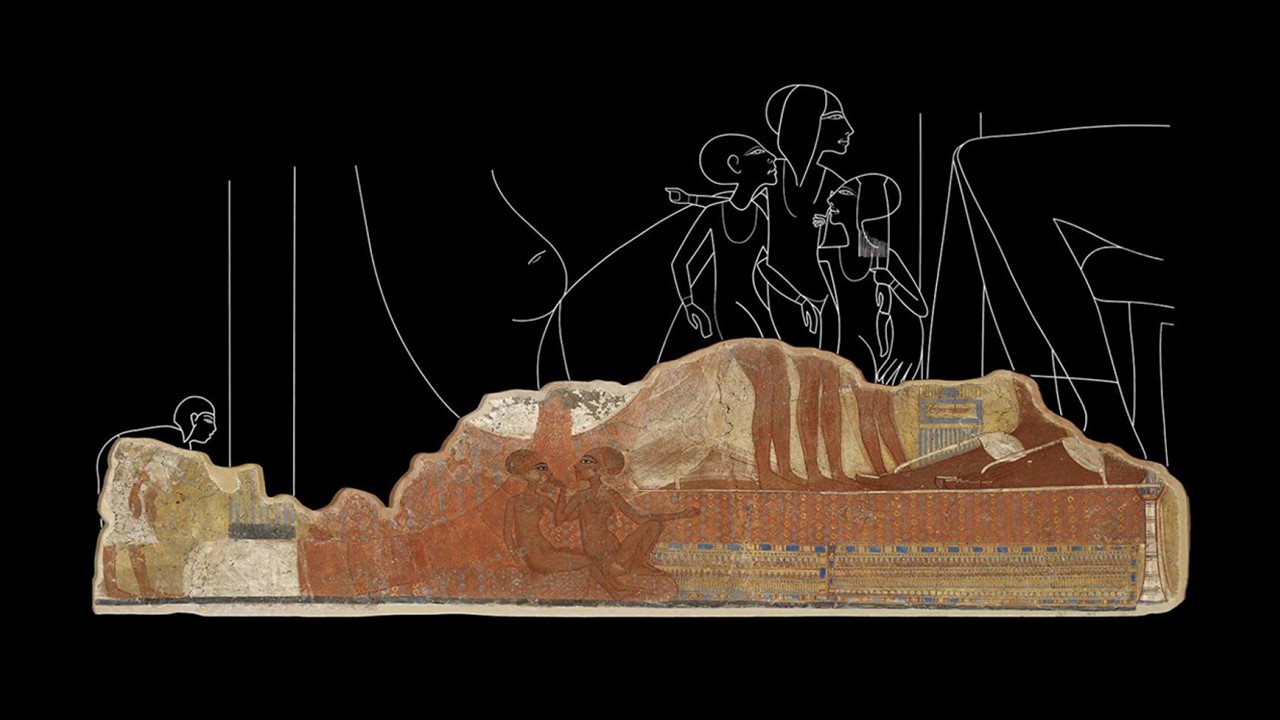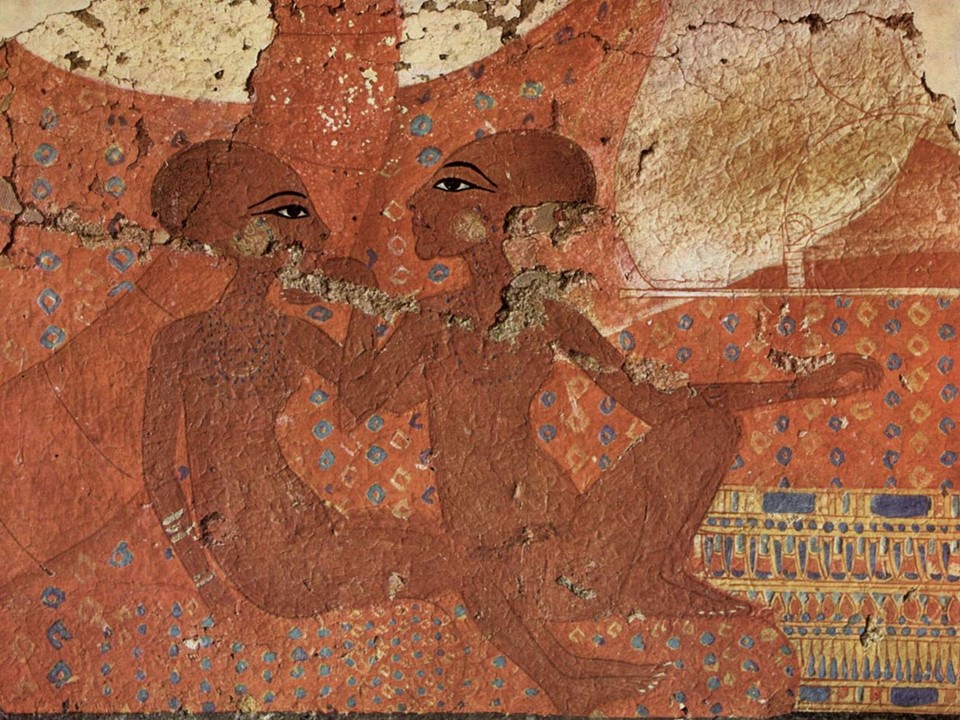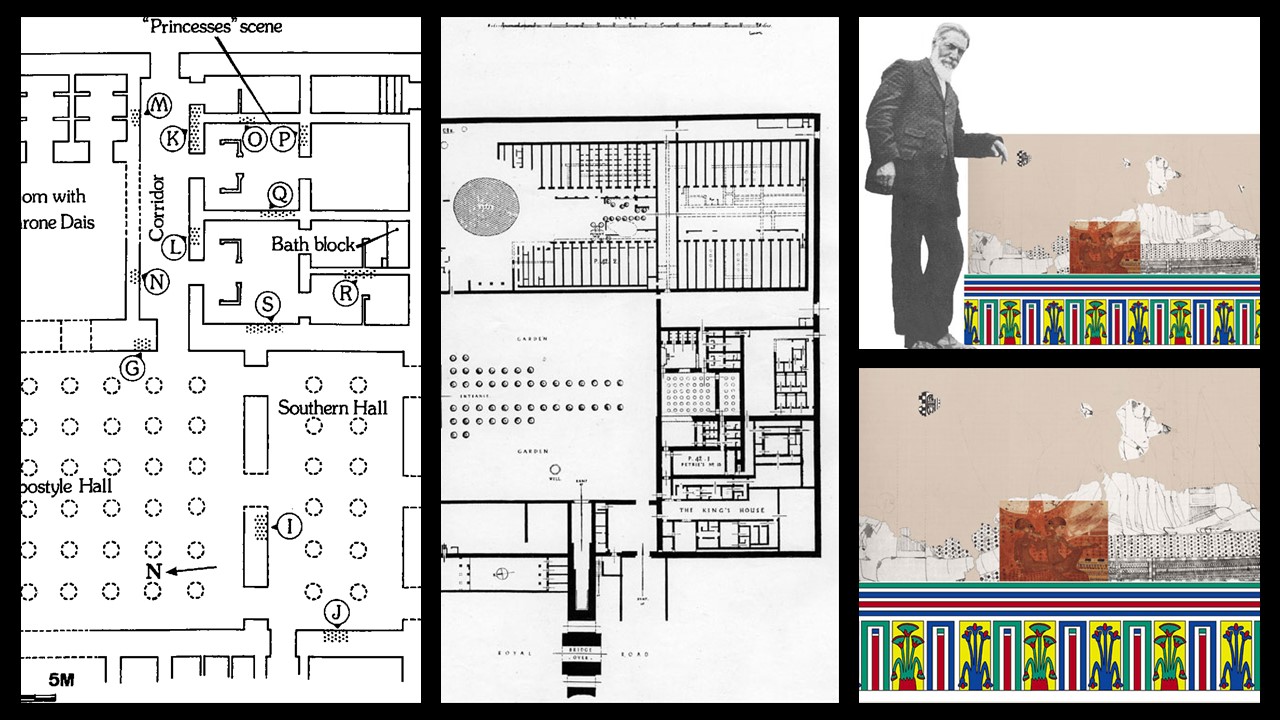
https://www.ashmolean.org/princess-fresco
“With the move to Amarna the art becomes less exaggerated, but while it is often described as ‘naturalistic’ it remains highly stylised in its portrayal of the human figure. The royal family are shown with elongated skulls and pear-shaped bodies with skinny torsos and arms but fuller hips, stomachs and thighs. The subject matter of royal art also changes. Although formal scenes of the king worshipping remain important there is an increasing emphasis on ordinary, day-to-day activities which include intimate portrayals of Akhenaten and Nefertiti playing with their daughters beneath the rays of the Aten… While traditional Egyptian art tends to emphasise the eternal, Amarna art focuses on the minutiae of life which only occur because of the light – and life-giving power of the sun.” writes Dr Kate Spence for BBC History and I use this quote as an introduction to Nofernoferuaton and Nofernoferure, my new POST on Egyptian Art. http://www.bbc.co.uk/history/ancient/egyptians/akhenaten_01.shtml
I would like to continue with another short quote by Dr Kate Spence “Akhenaten is a source of endless fascination and speculation – this often masks the fact that we actually know very little about him.” This quote marks the beginning of my Grade 7 Unit on the Art of the Amarna Period. I have been teaching this Unit for years and I can only testify to the fact that the Amarna Period allure attracts my student’s attention and captivates their imagination. They like to read and listen to their teacher describe the genesis of an almost “monotheistic” religion, the dynamics within a powerful royal family, the building of a new capital city, and how Egyptian Art of the period moved towards naturalism and informality.
The Amarna Idiom is an artistic style that captivates human reaction. My students are “hypnotized” by the unique Amarna pictorial beauty of deformation. They are charmed, yet question how in the depiction of faces, thin, long necks, hold greatly elongated skulls… facial folds are the norm, narrow, slitted eyes are prominent and jaws seem to be “hanging” low. The Amarna style body rendering amazes my students as well, particularly the discrepancy between the upper, lower and middle parts of the human body… the dropped, thin shoulders, heavy potbelly, large hips and thighs, and the rather thin, almost frail, legs.

https://www.ashmolean.org/princess-fresco
At some point, towards the end of my Amarna Unit, I ran a survey, titled “My Favourite Amarna Work of Art,” as I am always interested to understand what artistic qualities attract the admiration of my students. Among the finalists in my survey is the fresco painting of Nofernoferuaton and Nofernoferure, coming from Akhenaton’s capital city Akhetaten, known today as Tell el- Amarna, and exhibited in the Ashmolean Museum. Students love the bright, warm, terracotta-coloured palette, the casual, relaxed composition theme, the depicted stylistic exaggerations, and the overall sense of family affection that embraces the pictorial arrangement.
This fresco, fragile and precious, was discovered in the early 1890s by William Flinders Petrie, the renown archaeologist, at Akhetaten, “The horizon of the Aten,” where the visionary Pharaoh Akhenaton lived with his queen, Nefertiti, their six daughters, Nofernoferuaton and Nofernoferure among them, and the rest of the royal family. “The painting was made on a thin layer of gesso – powdered gypsum mixed with a glue – applied to mud plaster on a brick wall… (Petrie) discovered that the wall had been much damaged by ants and its preservation is a tribute to Petrie’s remarkable skills as an archaeologist.” https://www.ashmolean.org/princess-fresco and https://www.amarnaproject.com/pages/amarna_the_place/central_city/index.shtml

https://www.amarnaproject.com/pages/amarna_the_place/central_city/index.shtml
https://www.semanticscholar.org/paper/Wall-Paintings-from-the-King%27s-House-at-Amarna-*-Weatherhead/6939baf93dc88d6774e539c9cda0f3e920d54515/figure/2
Unearthed in the King’s House, “an enclosure measuring 123 by 140 meters, inside of which the building took the form of a U around a garden, with the actual residence of the king at the rear,” the Princess’s fresco depicts “Akhenaten and Nefertiti relaxing with their daughters, two of which are sitting casually on floor cushions in the foreground. The red sash of Nefertiti’s dress falls behind them, and to the right are Akhenaten’s sandaled feet. Between them stand three more daughters; the sixth daughter was probably shown seated on her mother’s lap, as suggested by a surviving fragment depicting a baby’s hand. The style and subject of this painting are in direct contrast to conventional Egyptian art and reflects the revolutionary character of the period.” Simply but beautifully said… http://www.touregypt.net/featurestories/royalestate.htm and https://www.ashmolean.org/princess-fresco
For a PowerPoint on Nofernoferuaton and Nofernoferure, please… Check HERE!
For a Student Activity, please… Check HERE!
If interested in smart Amarna period Resources and Activities, please… Check https://www.arch.cam.ac.uk/research/projects/current-projects/life-ancient-egypt-amarna-resources-schools/ancient-amarna